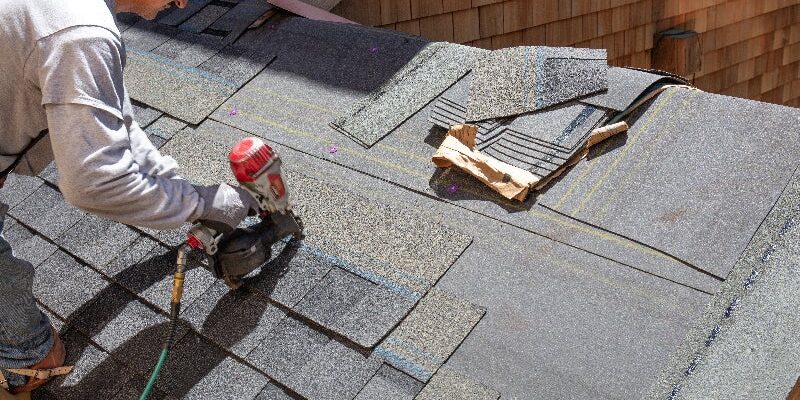When it comes to homeownership, maintaining the roof is a top priority. Roof repair is inevitable, but understanding the costs involved is essential for homeowners who want to ensure their investment in the safety and longevity of their home. Whether it’s fixing a small leak or replacing a few shingles, knowing what to expect can help you make informed decisions when it comes to repairs.
Common Roofing Issues
1. Identifying Roofing Problems Early: Roofing issues can start as small, manageable problems that, if left unaddressed, quickly escalate into more significant and costly repairs. Leaks, cracked shingles, and storm damage can all contribute to the deterioration of your roof over time. Spotting these issues early can save you from expensive repairs and potential damage to the structure of your home.
2. Impact of Neglected Issues on Costs: Neglecting small roofing problems may seem like an easy way to save money in the short term, but the reality is that minor issues can quickly turn into major repairs. For example, a small leak can lead to significant water damage and mold growth, increasing the total cost of the repair. Understanding this domino effect helps homeowners avoid a financial burden in the future.
3. Addressing Different Types of Roof Damage: Different types of roof damage require unique repair solutions, each impacting the cost. The most common types of damage include:
- Leaks: Often caused by worn-out shingles, flashing issues, or damage to roof vents.
- Storm Damage: Caused by wind, hail, or fallen debris.
- Wear and Tear: Over time, exposure to the elements can degrade your roofing materials, requiring repair.
Each type requires a specialized approach, with costs varying depending on severity and the necessary repair.
Roof Inspection and Assessment
A professional roof inspection is invaluable for identifying hidden problems that may not be immediately visible. These inspections are designed to catch issues early, before they turn into costly repairs. Professionals have the tools and expertise to assess the roof’s overall health, uncovering any underlying issues that could cause future damage.

1. Factors Considered During Assessment: Several factors are considered during a roof inspection, including:
- Age of the roof: Older roofs may need more extensive repairs or even a full replacement.
- Roof materials: Some materials may have a longer lifespan or higher repair costs than others.
- Extent of visible damage: Obvious damage, such as missing shingles, requires immediate attention.
These factors influence the final repair cost and the course of action needed to fix the roof.
2. DIY Inspection Tips for Homeowners: While professional inspections are essential, homeowners can take proactive steps by conducting their own DIY inspections. Simple actions, such as looking for loose or damaged shingles, checking for signs of water stains inside the attic, and removing debris from the roof, can help spot problems early and prevent costly repairs.
Materials and Labor Costs
- Breakdown of Roofing Materials Costs: The materials you choose for your roof play a significant role in the overall cost of repairs. Different types of shingles, such as asphalt, wood, metal, and slate, have varying price points and durability. For example, asphalt shingles are typically more affordable but have a shorter lifespan than metal roofing. Choosing quality materials may increase initial costs but can lead to lower long-term repair expenses.
- Labor Costs in Roof Repairs: Labor costs account for a large portion of roof repair expenses. Skilled roofing contractors charge for their expertise, and the complexity of the repair often determines the labor cost. Factors like the roof’s pitch, accessibility, and the type of damage will influence the time and effort required to complete the job, thus impacting labor costs.
- Impact of Material Choices on Long-Term Costs: While high-quality materials often come with a higher upfront cost, they can help reduce future repair needs. For instance, opting for durable metal roofing or architectural shingles can extend the lifespan of your roof, thus saving you money on repairs in the long run. Additionally, investing in more energy-efficient materials can lower your energy bills over time, providing further savings.
Roof Repair vs. Replacement
1. Evaluating the Extent of Damage: Determining whether a roof repair or a full replacement is needed depends largely on the extent of the damage. Small, localized damage like a missing shingle can often be repaired, while widespread damage or issues affecting the structure of the roof may require a full replacement. A professional roof inspection will help determine which option is best.
2. Cost Comparison: Repair vs. Replacement: When considering roof repairs versus replacement, it’s essential to evaluate the costs and benefits of each option. Roof repairs tend to be less expensive upfront, but they may be a short-term fix if the roof is nearing the end of its lifespan. A full roof replacement, while initially more expensive, can be a more cost-effective solution in the long run if repairs are likely to be needed again soon.
3. Factors Influencing the Decision-Making Process: Several factors will influence your decision to repair or replace your roof, such as:
- Age of the roof: Older roofs are more likely to require replacement.
- Extent of damage: Minor repairs might be sufficient for some issues, but widespread damage often calls for a replacement.
- Budget: Immediate costs may favor repairs, but replacement could save money over time.
Making an informed choice is vital to ensure the best value for your money and the longevity of your home.
Hidden Costs and Unforeseen Expenses
- Uncovering Hidden Damages During Repairs: Once the repair process begins, it’s common for contractors to discover hidden damage that wasn’t initially visible. This can include rotting wood, damaged insulation, or mold growth, all of which can add to the overall cost of the project. Being prepared for potential hidden damage can help you avoid financial surprises.
- Dealing with Unexpected Expenses: Unexpected expenses, such as the need for additional structural reinforcements or the discovery of more extensive damage, can arise during roof repairs. Homeowners should budget for these unforeseen costs, ensuring that they have the financial flexibility to handle any surprises that may come up during the repair process.
- Strategies for Budgeting Unforeseen Costs: Creating a contingency fund as part of your roofing budget can help you manage unexpected expenses. It’s advisable to set aside at least 10-15% of your total repair budget to cover unforeseen costs. This ensures that you won’t be caught off guard if additional repairs are needed.
DIY Roof Repair Cost Considerations
- Pros and Cons of DIY Repairs: DIY roof repairs can be an attractive option for homeowners looking to save on labor costs. Simple fixes like patching up small leaks or replacing damaged shingles can be done without professional help. However, DIY repairs come with risks, such as the potential for poor workmanship or further damage if not done correctly.
- Calculating Potential Savings: Before opting for DIY repairs, it’s important to calculate the potential savings and weigh them against the risks. While labor costs can be significant, mistakes made during DIY repairs may lead to higher repair costs in the future. Understanding the level of expertise required for the task can help homeowners make an informed decision.
- Knowing When to Seek Professional Help: While DIY repairs may work for minor issues, it’s crucial to know when professional help is necessary. Complex repairs, such as fixing leaks in hard-to-reach areas or dealing with extensive roof damage, require the expertise of a roofing contractor. Knowing when to call in a professional ensures that the repair is done correctly, saving you from costly errors down the line.
Hiring a Roofing Contractor
- How to Choose a Reputable Contractor: Choosing the right roofing contractor is essential for ensuring quality work and avoiding costly mistakes. Look for contractors with good reviews, proper licensing, and adequate insurance. Ask for references and check their experience with similar projects to ensure they have the expertise needed for your roof repair.
- Obtaining Multiple Quotes for Comparison: When hiring a contractor, always obtain multiple quotes for comparison. This allows you to evaluate different contractors based on price, reputation, and expertise. However, it’s important to avoid choosing the cheapest option; quality workmanship is often more valuable than saving a few dollars.
- Negotiating Prices and Understanding Contracts: Negotiating prices and carefully reviewing contracts is crucial to ensure you’re getting a fair deal. Be sure to discuss the scope of the project, the timeline, and any potential extra costs before agreeing to the terms. A clear contract ensures there are no surprises and that both parties are on the same page.
Conclusion
Maintaining a roof is a crucial aspect of homeownership that ensures the safety and longevity of your property. Understanding the costs involved in roof repairs—ranging from minor fixes to full replacements—empowers homeowners to make informed decisions. Early detection of issues, regular inspections, and choosing the right materials can all contribute to minimizing costs and prolonging the life of your roof. While DIY repairs can save money, knowing when to seek professional help is essential to avoid costly mistakes. By carefully considering factors like repair versus replacement, budgeting for unforeseen expenses, and hiring a reputable contractor, you can protect your investment and keep your home in top condition for years to come.







